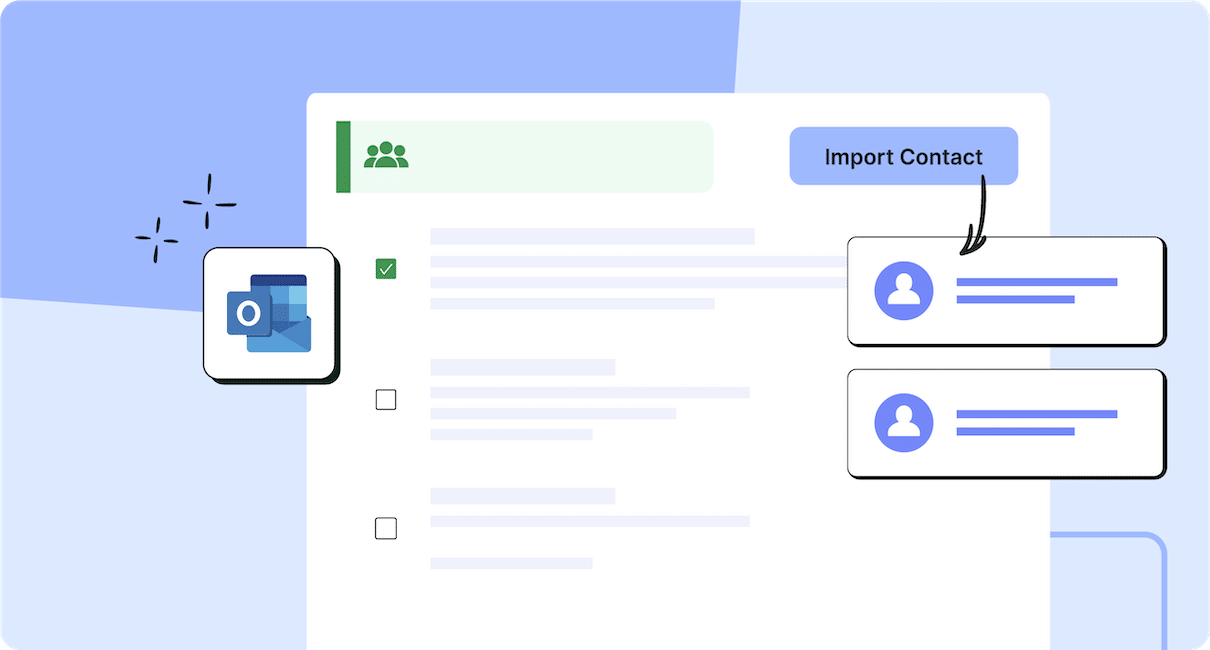Knowing how to measure employee engagement is the first step to improving it. But that’s more easily said than done. In this post, we break down the best ways to track and measure staff engagement for a more inspired workforce.
Engaged employees are more driven and excited about their work. They give more and get more from their roles. But increasing employee engagement is no small feat. It requires great leadership communication, recognition for hard work, and the right ways to measure employee engagement.
Today more than ever, measuring employee engagement is vital to keeping staff connected and inspired in a remote workplace. However, a successful engagement program must be grounded in real workplace engagement insights. As such, collecting employee feedback, tracking employee communications, and using employee engagement measurement tools is the cornerstone of a more connected and successful workforce.
Revive employee engagement with targeted, interactive emails and newsletters
Book a 15 minute call with one of our team members
What is Employee Engagement?
Employee engagement is when employees are personally invested in the company’s success. These employees feel connected to company values and do great work—even when no one’s watching. Happy and satisfied employees may attend every virtual game night, start work on time daily, and never complain. But the minute they’re approached by a recruiter, they bolt.
Being engaged means being in it for the long run, and this is a reportable outcome of employee engagement measurement methods.
As a result, measuring employee engagement is synonymous with business success. Learning how to measure and understand employee engagement metrics is essential to ensuring a thriving workplace. Read on as we break down why and how to assess employee engagement effectively.
Why Measure Employee Engagement?
Here’s why measuring employee engagement is important:
- Business teams with highly engaged employees have a 59% lower turnover rate than those with less engaged staff.
- Highly engaged teams are 17% more productive.
- Businesses with highly engaged workers have a 6% higher profit margin.
- Engaged employee teams experience 10% higher customer reviews.
Remember when you were in school and you had that one teacher who made the class exciting? Now, remember how their enthusiasm made you feel. Chances are you put in more effort, contributed more, and got more out of the course.
Being engaged in an organization works similarly, and translates into how we speak about our workplace to others.
The analysis of employee engagement measurement uncovers valuable information that empowers leaders to create a positive work environment, improve productivity, and reduce turnover.
So overall, why is employee engagement important? Because it benefits employees and businesses at the same time. When employers know how to measure employee engagement metrics, they deliver better strategies to amplify their gains.
10 Ways to Measure Employee Engagement
Now that we’ve established why we should measure employee engagement, let’s discuss how to measure employee engagement.
Measuring employee engagement isn’t always easy to quantify. Engagement can be an emotion, a state of mind, or a subliminal sense of connection.
Remote employee engagement brings added challenges. While you might notice an employee’s apathy or dissatisfaction through body language and facial expressions in person, it’s much harder to do so virtually. The same goes for frontline employee engagement.
Luckily, there are some great techniques and employee engagement apps to help measure employee engagement—regardless of workplace setting.
1. Establish clear employee engagement goals
Employee engagement goals are benchmarks for distinguishing an engaged employee from a disengaged one. It’s what your engagement metrics are trying to find out. While your metrics can be both numeric and qualitative, they should always serve to show how close you are to reaching your engagement benchmarks.
Here are some examples of employee engagement benchmarks to look out for:
- Employees feel that their opinions matter.
- Employees see professional growth and career development opportunities.
- The average employee Net Promoter Score is 9 or above.
- Employee absenteeism is below 1.5%.
- There is a high level of employee engagement and retention across a set period of time (e.g. one year).
- Staff open your employee newsletter at or above the industry average for email performance.
🐒 PRO TIP: Use our internal email benchmark report to find out the industry average for email performance.
2. Measure internal email engagement
Don’t underestimate old-fashioned email when it comes to measuring employee engagement. In fact, tracking internal email is the easiest and fastest way to gather hard data. Not to mention, it’s one of the top ways to measure employee engagement on a regular basis with minimal effort.
Remember, email is already the most popular internal communication tool for driving employee engagement. Its accessibility and ease of use mean that teams of all sizes rely on it daily.
With employee engagement measurement tools like ContactMonkey, you can monitor engagement and help it grow at the same time. It lets you do this by providing detailed analytics on three key metrics for employee engagement:
Open rate: This tells you how many people are actually curious about your company’s news and events. High open rates are a good sign that your employees are feeling engaged. However, you can also compare past and current email campaigns to check where engagement was higher.
Click-through rate: A greater click-through rate is a good indicator that your employees are aware of and interested in key company information. It allows you to see if your employee engagement ideas are actually working. Not to mention, you can see which content is most relevant and engaging. That way, you can model future content rollout on previously successful emails.
Location: Knowing which department or company branch has the majority of opens and clicks lets you see what teams are most engaged. By tracking this metric, you can check what’s working and what’s not before adjusting your strategy accordingly.
Track your internal comms performance
Decode employee patterns with real-time analytics.
3. Measure staff engagement with pulse surveys
Employee pulse surveys are great for measuring employee engagement. They provide quick, consistent, and actionable insights.
Pulse surveys are short, focused surveys oriented around a specific question. They get their name from a ‘pulse’ check, which provides an overview of employee wellbeing fast.
Due to their short length, pulse surveys get more responses and have even been proven to drive employee engagement.
The key is asking simple but meaningful employee engagement questions. As a rule of thumb, we recommend zeroing in on three types of staff engagement questions:
- Satisfaction questions: Does your team inspire you to do your best work?
- Opportunity questions: Are there enough opportunities for growth in your current team?
- Alignment questions: Do you feel like your leadership team considers your perspective on major decisions?
With employees relying on email even more to stay in touch during the pandemic, email-based surveys streamline the feedback process.
Using ContactMonkey’s employee pulse survey tool, you can seamlessly incorporate pulse surveys into your weekly employee newsletter. Just drag and drop the survey tile onto your email template, choose your survey type, and attach a question.
Learn how to create pulse surveys quickly with our step-by-step guide.
Also, check out our detailed guide on employee engagement survey design.
4. Calculate your eNPS
Number crunchers love eNPS (employee Net Promoter Score). Unlike more qualitative employee engagement metrics, eNPS is great for getting a precise, numeric engagement score.
eNPS is calculated based on the difference between your most engaged and least engaged employee. Put simply, it tells you how likely your employees are to brag about your company to others.
With ContactMonkey, learning how to measure employee engagement is easy. A built-in eNPS survey lets you gather feedback and find out your eNPS score all in one place—your employee newsletter. It’s simple: select an eNPS survey from the template builder sidebar and drag it to your desired location within the newsletter.
Frame your survey around specific topics relating to employee engagement.
We recommend asking:
- On a scale from 0-10, how likely are you to recommend this organization as a place to work?
For an added touch, provide an anonymous comments option. With ContactMonkey, simply turn on commenting within your email template. Your employees are instantly free to voice their honest opinions and feel safe doing so.
5. Set up one-on-one virtual meets
One-on-ones allow for more detailed and meaningful employee feedback while letting you gauge non-verbal cues. It’s also one of the most simple and straightforward best practices for employee engagement.
In a virtual setting, making employees feel seen and heard is the key to creating a safe feedback environment. It will also lead to more meaningful answers.
Before the meeting, remove any distractions so you can give full attention. Once you’re on your way, signal that you’re listening and understanding by summarizing key points raised.
One-on-ones are a great opportunity to get qualitative feedback so we recommend trying some of the following questions:
- What’s one thing about your work experience that is really positive?
- Is there an element of your work experience that needs improvement?
- Which three words or phrases best describe your organization’s culture?
Step up your remote team communication with our list of fun virtual team-building activities for work.
6. Set up a focus group
Used widely in market research, focus groups allow you to gauge employee likes, dislikes, and attitudes through a representative sample. This is especially useful for larger businesses where one-on-ones may be harder to arrange.
To measure employee engagement through focus groups, create a callout for participants using your internal newsletter. Choose employees from specific departments or combine staff from across the company for a wider outlook. With a set of pre-planned questions, guide a discussion about team wins and challenges.
For engagement-focused insights, ask questions like:
- Do you have a good sense of your role in contributing to organizational goals?
- Is there anything that’s limiting your growth in the organization?
- Do you agree with the way our company defines “success”?
7. Track and monitor employee retention and satisfaction
As we saw earlier, engaged employees are much more likely to stay with their company longer. They’re also less likely to be easily persuaded by alternative job offers.
Knowing how to measure employee satisfaction through retention is key, but it’s not as straightforward as other metrics.
You’ll need to compare your employee turnover this year or quarter to last. Once you gather the data, ask yourself: If my turnover rate is higher than in the past, what did I do differently then? Did our employee onboarding processes change?
To get even better insights, create a quick employee pulse survey dedicated to learning about employee retention. Focus your questions on exploring how employees see their future within the company.
Ask yes/no questions like:
- Do you see yourself still working at [company] in two years’ time?
- Are you proud to work for [Company X]?
For surveys on sensitive topics like this, use a pulse survey tool with anonymous feedback options. That way, employees can feel safe sharing their true feelings.
With ContactMonkey’s internal communications app, both emoji reaction and eNPS-based surveys can include anonymous comment options. Once responses are in, easily track pulse survey response rates on your analytics dashboard.
8. Look at employee productivity data
We already saw that higher productivity is a key outcome of an engaged workforce. For the same reason, we can use productivity to measure employee engagement. Employee productivity is about how effectively employee inputs turn into business outputs.
To measure productivity, divide your revenue for a specific year or quarter by the total number of employees. Compare the results across multiple departments and look for trends, patterns, and improvements.
Keep in mind, productivity alone won’t tell you exactly how to increase employee engagement. Always support your employee productivity scan with other employee engagement measurement methods and tools like email tracking software.
With ContactMonkey’s segmented email stats, you can get engagement data to support your insights on productivity. Access all of your analytics in your campaign dashboard and organize stats based on department, job title, or location. When it comes time to create your engagement strategy, you’ll know exactly which areas of your company you need to prioritize.
9. Check your employee absenteeism rate
When an employee takes a few days off every month, it’s not necessarily a sign of concern. But if you notice that absenteeism is becoming a trend among staff, it’s a red flag for employee engagement.
Analyze this staff engagement metric by looking at the rate and amount of absent employees over a given period. High absenteeism rates likely suggest high employee disengagement.
To support your insights, cross-reference your data with the responses on your employee pulse surveys.
Ask yourself:
- Did absenteeism increase in the same period that your eNPS plunged?
- Has employee turnover increased at the same time as absenteeism?
Answering these questions will help you better understand your company’s overall staff engagement and employee experience. This will enable you to make well-informed changes.
How much is low employee engagement costing you?
Measure your internal comms ROI
10. Use an exit interview survey
In an exit survey, feedback is collected from employees who are already leaving your company. Ones that are less likely to feel like they’re risking their job if they speak negatively about their experience. This makes exit surveys a treasure trove of honest insights.
Use your ContactMonkey pulse survey to send a personalized message to a departing employee and frame it with short, simple questions. Combine quantitative yes/no pulse survey questions with qualitative questions by turning commenting “on” within your email template.
For quantitative questions, we recommend asking:
- Were you equipped to do your job well?
- Did you receive constructive feedback to help you improve your performance?
For qualitative feedback, ask:
- What was a key deciding factor that led you to accept a new position?
- Name one thing you liked most and least about your role.
Act on Your Metrics With ContactMonkey
No matter what outcomes your employee engagement metrics show, it’s important to continuously seek improvement. Even if you’re seeing promising results, don’t take it as a sign that you should slacken your efforts.
Employee engagement can easily fluctuate if you don’t properly maintain or build on your engagement strategies. To keep engagement high, implement new employee recognition ideas, prioritize employee well-being, and listen to employee feedback. Knowing how to measure engagement will ensure that you can always address issues in a timely manner.
Email management software like ContactMonkey keeps track of employee engagement quickly, continuously, and effectively. Ready to learn more? Book a FREE demo, today!


